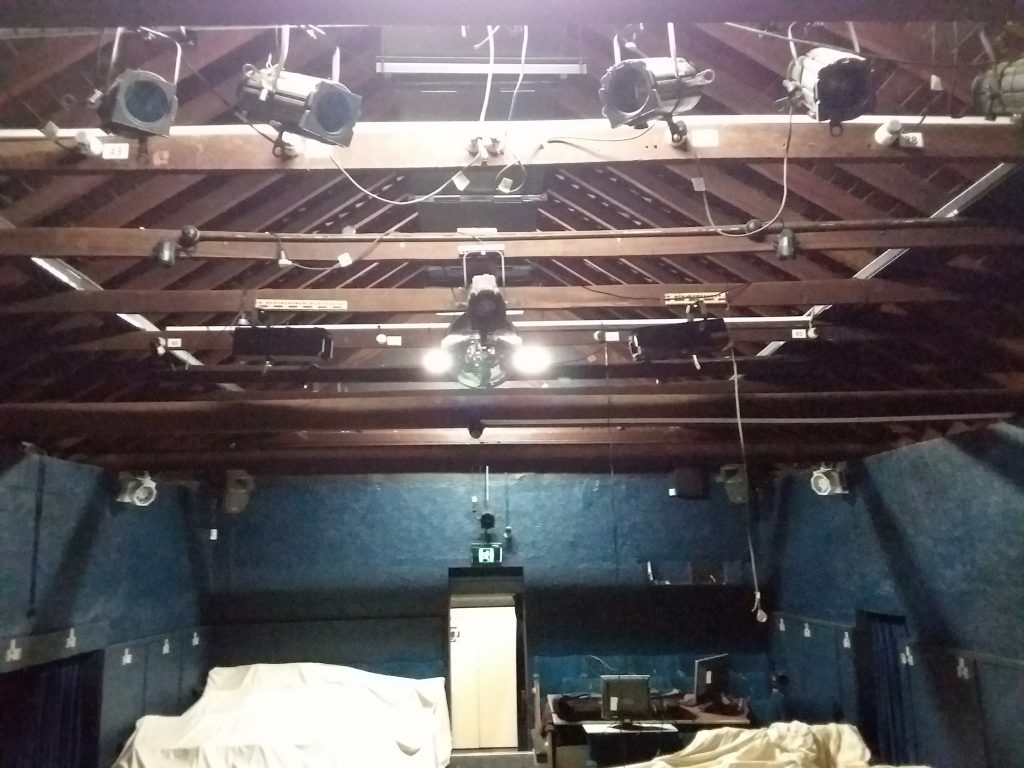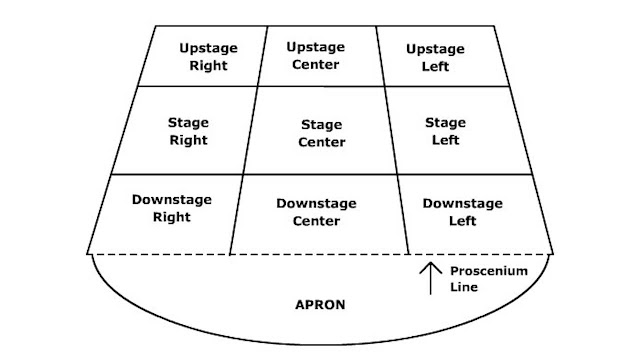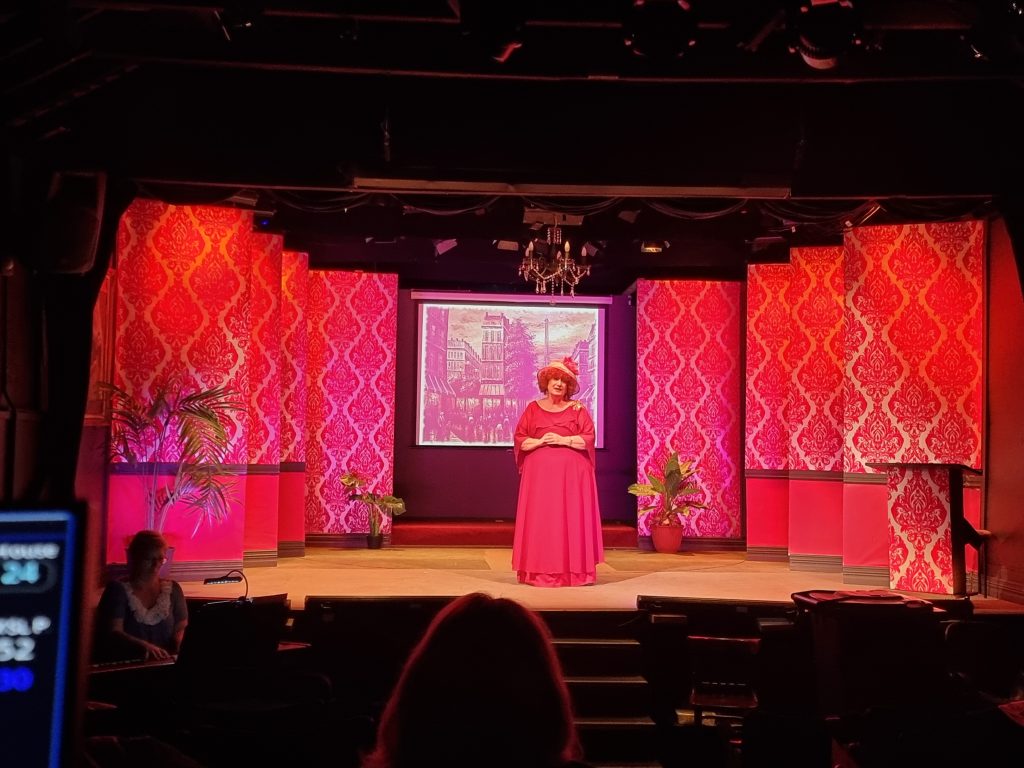This session has a look at the existing theatre lighting to evaluate how useful it is for drama lighting using the McCandless Method.
With NO stage lights on, only working lights to allow the stage lighting to be easily seen, the participants need to stand in the centre of the nine stage areas, as this is our focus area to ensure that the actor is lit.
The participant raises their two arms up at 45 degrees and seperaties them 45 degrees to each side to see the ideal position that the stage lighting should come from to provide the Warm and Cool light that forms the basis on the McCandless Method. Hopefully they will be pointing at two lights on a lighting bar. For the outside stage areas, the outside light is usually less that 45 degrees due to the limitations of where lighting bars can be rigged.
It the participant turns around and raises an arm at 60 degrees they would be pointing at the ideal location for a backlight.
The nine lights focused on the left side of the acting areas are an attempt to provide the parallel rays of natural light coming from the sun and the nine lights focused on the right side of the acting areas are an attempt to provide the parallel rays of natural light coming from the reflected sunlight. The nine backlights coming from behind the actors is providing reflected sunlight and allows for a different colour to the side reflected sunlight. This is the basis of the McCandless Method.
By using nine separate lights on ideally their own control circuit we can provide isolation between actors in different acting areas. If an actor standing DSL was lit with their right hand light, there is no direct light on the other acting areas. If the actor standing DSL was lit with their left hand light, the light would spill into MSC and USR acting areas.



If a production is using projection, the upstage lighting will be focussed so it does not wash out the projection, so will not be set up for a standard McCandless Method focus. In this example of the lighting for the 2022 Bernie’s Old Tyme Music Hall production, you can see the two diagonal shadows from the two front lights on the floor next to the performer. The upstage platform has dark walls, but if you stand on the platform and look to the sides, you will see a profile spotlight rigged on either side, with the shutters stopping any light going onto the rear wall where the projection screen is. These two lights will light performers on the rear platform as well as lighting their entrances and exits. This picture is taken from the lighting desk during plotting, which is the preferred plotting position, so you can see the lighting from the audiences perspective.

Page updated 21 February 2023.